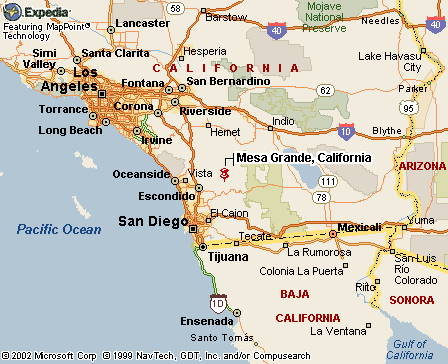|
|
Canku Ota |
|
|
(Many Paths) |
||
|
An Online Newsletter Celebrating Native America |
||
|
October 19, 2002 - Issue 72 |
||
|
|
||
|
Ancestral Art |
||
|
by Ruth Lepper Signs
on San Diego
|
||
"I was just a little kid then, running around. I was standing there watching her. I just told myself, 'One of these days, I'm going to make one of those.' " His grandmother made clay pots called eskaay. Now he uses the same coiling method to make the vessels that he bakes in a fire pit at his home on the Santa Ysabel Indian Reservation. The fire makes black designs on the red clay. Each is unique. "The fire makes them black," he said. "A lot of pictures come out in the design. The fire does that. Some people see a lot of stuff in them." The most unusual piece Yellow Sky has made had a black star in the design. "The star came up on top. It was all red except for that one star." It takes, on the average, four days for him to make a pot, taking size into consideration. The usual shape is a round pot, measuring about 8 inches in diameter and 6 inches in height. But he has made one as large as 18 inches high with a 13-inch diameter. Yellow Sky doesn't have to travel far for his clay. He finds the best material at the top of a ridge on a hill near his house in Mesa Grande. There are several steps to be taken before the clay is ready for use. First, he sifts it through a screen until the texture becomes very fine. Next, he adds water. "Mix it up 'til it gets to where you'll be able to handle it, to the right consistency. Sometimes it's better to leave it for a couple of weeks to cure itself. I usually put it in a plastic bowl and cover it up." When it's ready, Yellow Sky rolls the clay out, then coils it into a shape. He rubs a stone over the pot to remove air bubbles and smoothes the coils with a wooden paddle. Then it's ready for baking. The pot stays in the pit from 30 minutes to five hours. "It depends how hot that fire is," Yellow Sky said. "The longer it stays in there, the better your pot is. Sometimes you pull it out too quickly." And how hot is it? He doesn't know; no one has ever checked the temperature inside the pit. Yellow Sky uses evergreen bark on top of small pieces of wood in the pit. On top of that, he places chunks of dry cow manure. "Just let it go until the fire burns itself out. ... Once you put the fire on it, it's left until the fire's gone." Once the fire is out, the pot stays in the pit until it cools. There is only one way to test the pot to see if it is ready to take out. "Put your hand in there and touch it. If it's real hot, then it's going to stay in a longer time." Not every firing is a success. If an air bubble develops, it can cause the clay pot to break. "If it pops, then you start all over again. It's gone. You can't reuse the clay." Yellow Sky knows from experience. "I was making a big water jug. I spent one or two weeks on it. Sometimes that takes three months to dry. When I put it in (the fire), one side got too hot. It popped a hole in it and broke in half. It's tough; it's not easy." Yellow Sky creates pots when he is in a positive mood. "No negative thoughts. If I get negative thoughts, I'll just leave it. I try to put a lot of positive energy in it." He also relies on the spirits of his culture. "The spirits will stop you sometimes. You just get up and leave, and you don't know why." He has taught one of his daughters, Heidi Osuna, the tradition of the craft. Divorced for many years, he stays close to his seven children, 22 grandchildren and five great-grandchildren. Also known as Erwin Osuna, Yellow Sky, 67, has lived in the Julian and Mesa Grande areas all his life. His work and his daughter's efforts will be featured Sunday through Oct. 26 in the Boehm Gallery at Palomar College in San Marcos. "The Spirit of the Story" exhibit is presented in conjunction with the 17th annual California Indian Conference, hosted by the college. Yellow Sky's pots sell for $350 to $900, many to repeat customers.
|
|
|
||
|
|
||
| Canku Ota is a free Newsletter celebrating Native America, its traditions and accomplishments . We do not provide subscriber or visitor names to anyone. Some articles presented in Canku Ota may contain copyright material. We have received appropriate permissions for republishing any articles. Material appearing here is distributed without profit or monetary gain to those who have expressed an interest. This is in accordance with Title 17 U.S.C. section 107. | ||
|
Canku Ota is a copyright © 2000, 2001, 2002 of Vicki Lockard and Paul Barry. |
||
 |
 |
|
|
The "Canku Ota - A Newsletter Celebrating Native America" web site and its design is the |
||
|
Copyright © 1999, 2000, 2001, 2002 of Paul C. Barry. |
||
|
All Rights Reserved. |
||
